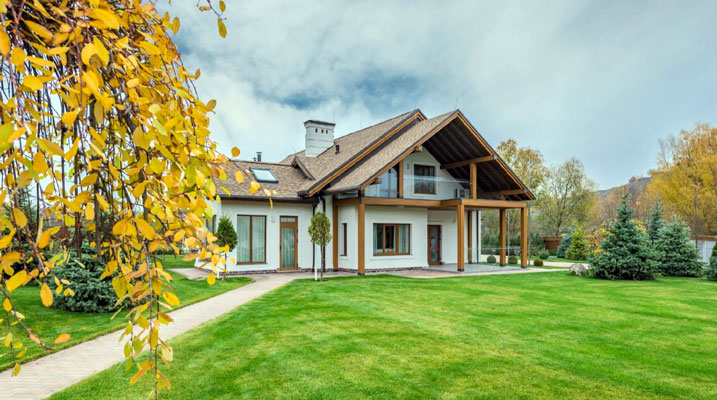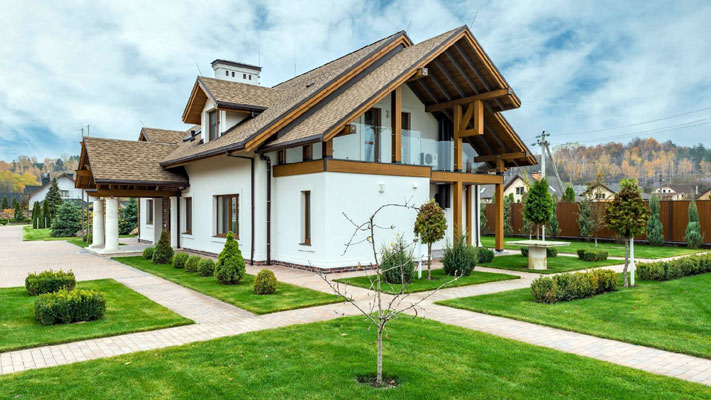The visual appeal of a home often defines the first impression it makes on visitors, potential buyers, or even residents themselves. While structural integrity and functionality are critical, the way a home looks can significantly affect mood, perception, and even property value. Certain areas of a house play a more prominent role in shaping this visual impact than others.
Understanding these areas and how to optimize them can help homeowners create a harmonious, inviting space. From the front exterior to interior details, attention to aesthetics in key zones can transform a home from ordinary to remarkable.
First Impressions Matter
The front of a home sets the tone for the entire property. Elements like paint color, siding, roofing, and landscaping immediately communicate style and maintenance levels. A well-maintained lawn, modern siding materials, and clean pathways contribute to a polished appearance. Small additions, such as planters, lighting fixtures, or a tasteful welcome mat, can make a noticeable difference.
For homes on busy streets or in neighborhoods with high visibility, investing time in curb appeal ensures visitors and passersby see a home as inviting and cared for. Every detail contributes to a cohesive impression that impacts the perception of the property.
A Statement of Style
The entryway functions as a transition between the outside world and the interior. Its design influences how people feel the moment they step inside. Clean lines, organized spaces, and thoughtful decor enhance a sense of welcome and sophistication. Flooring materials like hardwood, tile, or patterned rugs create texture and visual interest, while lighting sets the mood.
Including storage solutions such as benches, coat racks, or hidden compartments maintains order and prevents clutter from undermining style. The entryway acts as a preview of the home’s interior aesthetic, establishing expectations for the rest of the space.
Central Gathering Space
The living room often serves as the heart of the home, making it one of the most important areas for visual appeal. Furniture placement, color palettes, and decorative accents shape the room’s atmosphere. Balanced arrangements of sofas, chairs, and tables create flow and functionality, while artwork and lighting enhance character.
Windows and natural light play a significant role in perception, with sheer curtains or blinds helping to moderate brightness and soften the ambiance. Maintaining clean, uncluttered surfaces, combined with textures like throws, cushions, or rugs, elevates the aesthetic without overwhelming the space.
Functional Beauty
The kitchen has evolved beyond a purely functional space, emerging as a key factor in home aesthetics. Cabinets, countertops, and appliances contribute to style and efficiency. Coordinated colors, quality finishes, and well-chosen hardware create a cohesive, polished look.
Open shelving or glass-front cabinets can showcase visually appealing items like dishware or cookbooks, adding personality. A clean, organized kitchen signals care and attention, while proper lighting enhances visual appeal and usability. Even small touches, such as a stylish backsplash or decorative jars, contribute to a kitchen’s charm without compromising practicality.
Atmosphere for Connection
The dining area plays a significant role in creating a visually pleasing environment where people gather. Furniture selection, including table size, chair style, and complementary decor, influences the space’s perception. Lighting above the table is particularly impactful, with chandeliers, pendant lights, or wall sconces providing function and ambiance.
Centerpieces, table runners, and subtle accents can elevate the space without appearing cluttered. Coordinating colors and materials with adjacent areas ensures visual continuity. A dining area that feels thoughtfully arranged encourages interaction and enhances the sense of style within the home.
Personal Expression and Comfort
Bedrooms balance functionality with personal expression, making them central to a home’s visual appeal. Bedding choices, furniture arrangement, and decor establish a mood that reflects individual taste. Color palettes influence perceptions of calmness, warmth, or energy, while textures from linens, rugs, and curtains provide depth.
Storage solutions that hide clutter contribute to a clean, serene appearance, while accent walls, artwork, or decorative lighting create focal points. A visually appealing bedroom combines comfort and style, serving as a sanctuary while demonstrating attention to detail throughout the home.
Clean Lines and Details
Bathrooms are compact spaces where aesthetics and functionality intersect. Fixtures, vanities, mirrors, and lighting can dramatically influence perception. Tile patterns, countertop materials, and hardware finishes add visual interest, while organization prevents the small space from feeling chaotic.
Well-placed lighting, including task and ambient options, enhances usability and creates a pleasant atmosphere. Even minor updates like towel arrangements, decorative soaps, or coordinated accessories elevate the room’s appeal. Cleanliness remains paramount, as a visually tidy bathroom conveys a sense of order and care, reinforcing the home’s aesthetic.
Connecting Spaces Gracefully
Hallways are often overlooked in discussions about visual appeal, but they provide continuity between primary areas of a home. Flooring, wall colors, and lighting influence how these transitional spaces are experienced. Artwork, mirrors, or small furniture pieces can add interest without creating congestion.
Consistency with adjoining rooms ensures smooth visual transitions, while adequate lighting prevents hallways from feeling narrow or uninviting. Thoughtful design in these connecting areas contributes to a cohesive aesthetic, subtly reinforcing the home’s sense of style as people move from one room to another.
Extending the Aesthetic
Outdoor areas, including patios, decks, and gardens, serve as extensions of the home’s interior style. Furniture, planters, lighting, and surface materials contribute to visual appeal and usability. Comfortable seating arrangements, decorative accents, and coordinated colors help create spaces that feel like a natural continuation of the indoors.
Seasonal touches, such as cushions, throws, or lanterns, allow for a flexible design that adapts to changing weather and social occasions. Attention to these outdoor areas enhances aesthetics and functionality, ensuring that the home’s charm is not confined to its interior.

Visual appeal in a home is influenced by multiple areas, each contributing to the perception of style, comfort, and care. From the exterior to interior details, understanding the role of key spaces helps homeowners prioritize improvements that make a noticeable impact. Focusing on entryways, living spaces, kitchens, bedrooms, and even transitional zones ensures that the home communicates a sense of cohesion and refinement.
Well-maintained and thoughtfully arranged areas, complemented by personal touches, elevate the home’s appearance and create an environment that is inviting and visually pleasing.










